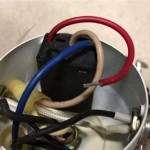Essential Aspects of Covers for Fluorescent Ceiling Lights
Covers for fluorescent ceiling lights play a crucial role in optimizing lighting quality and enhancing the aesthetics of indoor spaces. They offer a myriad of functions that contribute to efficient light distribution, glare reduction, and visual comfort. Understanding the essential aspects of covers for fluorescent ceiling lights is paramount for informed decision-making and achieving satisfactory lighting outcomes.
This article delves into the key considerations when selecting covers for fluorescent ceiling lights, exploring their types, materials, and design features. We will also discuss the impact of covers on light quality, energy efficiency, and visual ergonomics. By providing a comprehensive overview of these essential aspects, we aim to empower readers with the knowledge necessary to make informed choices and achieve optimal lighting solutions.
Types of Covers for Fluorescent Ceiling Lights
Covers for fluorescent ceiling lights come in various types, each designed for specific applications and light distribution requirements. The most common types include:
- Prismatic Lenses: These covers feature a series of prisms that refract light, directing it in a specific pattern. They are used to control glare and provide uniform light distribution.
- Diffusers: Diffusers scatter light in all directions, creating a soft and even glow. They are ideal for reducing glare and improving visual comfort in areas where direct light can be bothersome.
- Louvers: Louvers consist of parallel blades that shield the light source from view. They are effective in reducing glare and controlling light direction, making them suitable for spaces with high ceilings.
- Egg Crate Louvers: Similar to louvers, egg crate louvers feature a grid-like pattern that provides excellent glare control and light distribution.
Materials for Covers
The material of the cover influences its durability, light transmission, and aesthetic appeal. Common materials include:
- Acrylic: Acrylic is a lightweight, shatter-resistant material that offers high light transmission. It is often used for diffusers and prismatic lenses.
- Polycarbonate: Polycarbonate is another durable material with excellent impact resistance. It is commonly used for louvers and egg crate louvers.
- Metal: Metal covers, such as aluminum or steel, are durable and provide good heat dissipation. They are often used in industrial and commercial applications.
Design Features
The design features of covers for fluorescent ceiling lights affect their functionality and aesthetics. Key considerations include:
- Shape: Covers can be square, rectangular, or circular, depending on the fixture and application.
- Size: The size of the cover should match the dimensions of the light fixture.
- Transmittance: The transmittance of the cover determines the amount of light that passes through it. Higher transmittance results in brighter light, while lower transmittance reduces glare.
- Color: Covers are available in various colors, such as white, black, and translucent, to complement the interior décor.
Impact on Light Quality
Covers for fluorescent ceiling lights have a significant impact on light quality:
- Glare Reduction: Covers can effectively reduce glare by diffusing or shielding the light source.
- Light Distribution: Covers can control the distribution of light, ensuring uniform illumination or directing it in a specific direction.
- Color Rendering: Some covers can affect the color rendering of the light source, influencing the appearance of colors in the illuminated space.
Energy Efficiency and Visual Ergonomics
Covers for fluorescent ceiling lights can contribute to energy efficiency and visual ergonomics:
- Energy Savings: Diffusers and prismatic lenses can reduce glare and improve light distribution, potentially reducing the number of light fixtures required and saving energy.
- Visual Comfort: Covers can improve visual comfort by reducing glare and providing even illumination, reducing eye strain and fatigue.
By considering the essential aspects of covers for fluorescent ceiling lights, architects, designers, and homeowners can make informed choices that optimize lighting quality, enhance aesthetics, and contribute to a comfortable and energy-efficient environment.

High Quality Light Covers Sky Ceiling Panels Led And Fluorescents

High Quality Light Covers Sky Ceiling Panels Led And Fluorescents

Octo Lights Fluorescent Light Covers 2x4 Flexible Ceiling Filters For Classrooms And Offices Cloud 011 Com

High Quality Light Covers Sky Ceiling Panels Led And Fluorescents

Octo Lights Fluorescent Light Covers 2x4 Flexible Ceiling Filters For Classrooms And Offices Astronomy 001 Com

Ceiling Panels Light Prismatic Acrylic Lighting

4 Pcs X 2 Feet Fluorescent Light Covers For Ceiling Lights Classroom Office

Fluorescent Light Covers Filters For Classroom Home Office Waterfall 009

Octo Lights Fluorescent Light Covers 2x4 Flexible Ceiling Filters For Classrooms And Offices Landscape 001 Com

How To Replace An Old Fluorescent Light Fixture Young House Love
Related Posts








